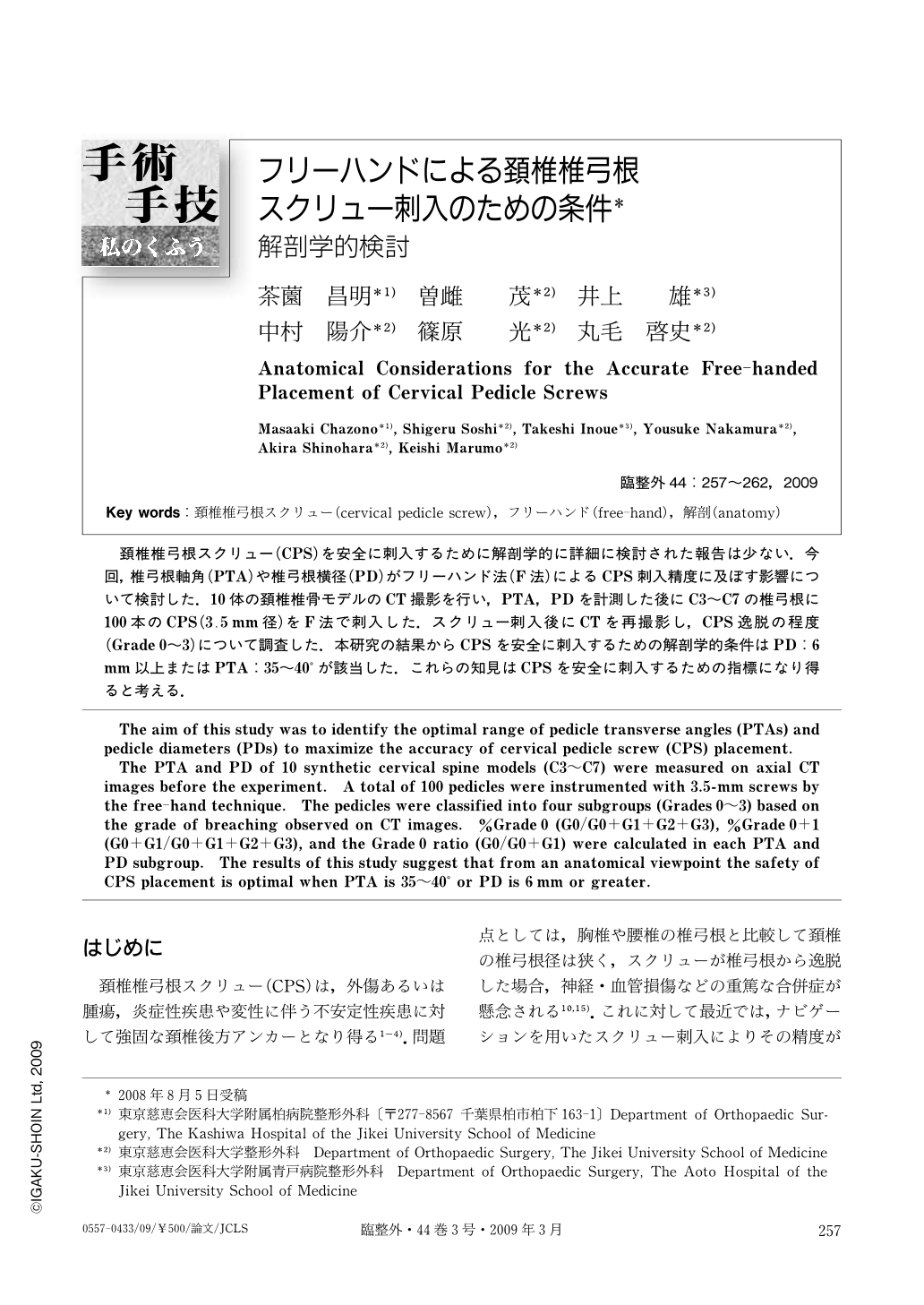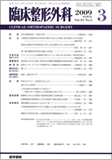Japanese
English
- 有料閲覧
- Abstract 文献概要
- 1ページ目 Look Inside
- 参考文献 Reference
頚椎椎弓根スクリュー(CPS)を安全に刺入するために解剖学的に詳細に検討された報告は少ない.今回,椎弓根軸角(PTA)や椎弓根横径(PD)がフリーハンド法(F法)によるCPS刺入精度に及ぼす影響について検討した.10体の頚椎椎骨モデルのCT撮影を行い,PTA,PDを計測した後にC3~C7の椎弓根に100本のCPS(3.5mm径)をF法で刺入した.スクリュー刺入後にCTを再撮影し,CPS逸脱の程度(Grade0~3)について調査した.本研究の結果からCPSを安全に刺入するための解剖学的条件はPD:6mm以上またはPTA:35~40°が該当した.これらの知見はCPSを安全に刺入するための指標になり得ると考える.
The aim of this study was to identify the optimal range of pedicle transverse angles (PTAs) and pedicle diameters (PDs) to maximize the accuracy of cervical pedicle screw (CPS) placement.
The PTA and PD of 10 synthetic cervical spine models (C3~C7) were measured on axial CT images before the experiment. A total of 100 pedicles were instrumented with 3.5-mm screws by the free-hand technique. The pedicles were classified into four subgroups (Grades0~3) based on the grade of breaching observed on CT images. %Grade0 (G0/G0+G1+G2+G3), %Grade0+1 (G0+G1/G0+G1+G2+G3), and the Grade0 ratio (G0/G0+G1) were calculated in each PTA and PD subgroup. The results of this study suggest that from an anatomical viewpoint the safety of CPS placement is optimal when PTA is 35~40° or PD is 6mm or greater.

Copyright © 2009, Igaku-Shoin Ltd. All rights reserved.


